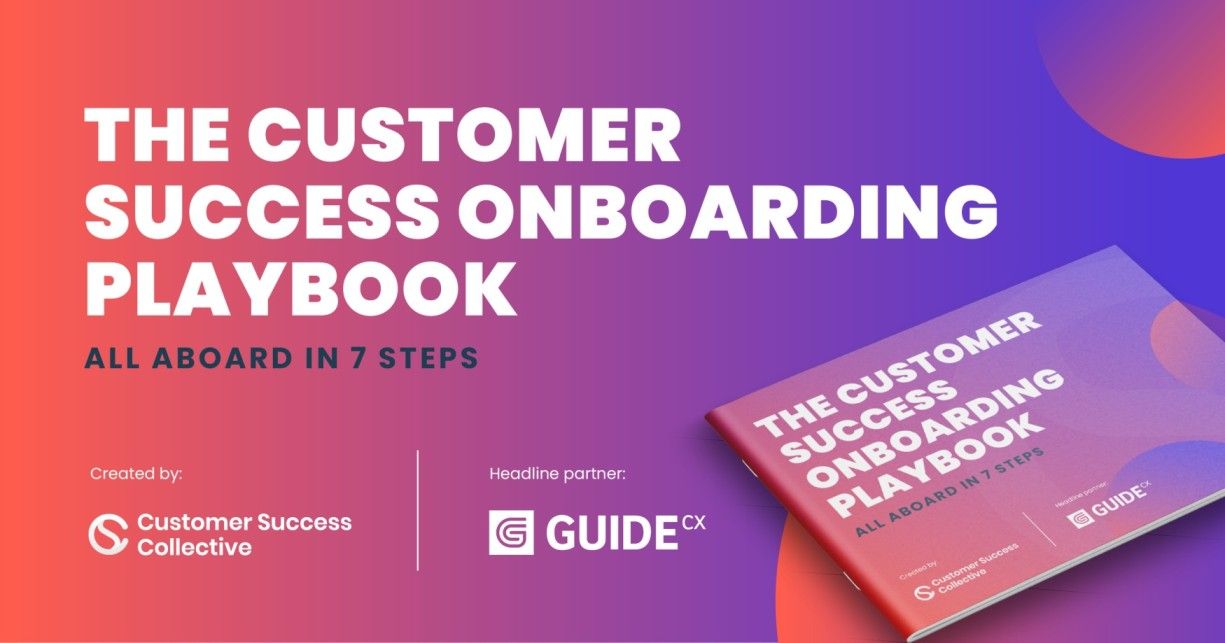Looking to maximize the value of your customer success team’s work and make sure the whole organization knows about it? Look no further!
We’ve gathered a panel of seasoned CS professionals to share their insights on how to effectively communicate the value of CS and drive maximum return on investment (ROI) through your CS team’s activities.
Meet our all-star lineup:
🌟 Rebecca Nerad, VP of Customer Success at E2Open,
🌟 Michael Hill, former Customer Success Manager at Kuber (currently Strategic Customer Success Manager at Madison Logic),
🌟 Jessie Miño, Customer Success Manager at Robin, and
🌟 Yana Myaskovskaya, former Director of Customer Success at Threekit (currently Head of Customer Success at Bodhi).
Keep reading to learn more about the ROI that CS teams can bring to any organization and how you can make sure your cross-functional teams and customers know all about it.
How to drive maximum ROI through your CS team’s activities
Yana Myaskovskaya:
As our CS team has grown, I've placed a big focus on evaluating all of our metrics and trying to effectively communicate the ROI of what we do. With this in mind, we’ve identified the customer success teams’ activities that provide the most value to our business.
Expansions are a critical piece of that. It's really important that we focus our activities on what is driving expansion and increasing average contract value (ACV) for our customers, particularly those that have a lot of expansion potential. And so what we've done is create a chart of the activities that customer success managers should be doing in order to achieve the most expansion, revenue, and ROI for the business.
From there, we look at what else Customer Success Managers (CSMs) are doing that prohibits them from effectively achieving those initial goals. That might include managing escalations. Now, escalations are critical to making sure that customers are happy, but they're generally not a direct driver of expansion or ACV, so we try to be very cognizant of how much time CSMs are spending on that.
If you’re interested in undertaking a similar process, start by asking your team where they're spending their time each week. Looking at your team’s calendars and doing a cross-section analysis can also give you valuable insights into whether they’re spending their time in the areas that drive ROI or spending a lot of time elsewhere.
From there, you’ll probably need to undertake some process changes to make sure that the majority of their time is spent on the things that you and your executive team have agreed are really critical in getting ROI from CS.
That's something that we’ve been very consciously doing this year, and it has helped us to drive a lot of growth on our team. Before, there were just two long-standing CSMs on the team, and now I have five direct reports. It’s because we were able to prove how we could drive expansions for our largest customers that the team was able to grow so substantially.

To be clear, I don't make my team constantly track their time – I've been on the other end of that and it's not my favorite. We generally do this twice a year in order to evaluate how much time they're spending on what in any given period and make sure that they're able to focus on the right kinds of activities.
It's not intended to be a micromanagement technique by any means. It's intended to open them up to do the kind of work that they enjoy. I mean, if they didn't enjoy having strategic conversations with customers, they probably wouldn't be a great fit for the role. And while escalations are super important, no one wants to spend 90% of their time getting yelled at by customers. Their time can be better spent.
Rebecca Nerad:
I love that. It also helps drive accountability when your CSMs are spending too much time covering gaps that should be served by other teams. That's something you often see; CSMs might be leaning too much into support or even doing consultative work that could be billable. By looking into where they’re spending their time, we can start to address those kinds of issues.

How to demonstrate the value of your CS team’s work
Michael Hill:
I love the idea of building processes to help us make sure we're on top of the right tasks. I would just add that it’s the organization’s key goals that help determine what value-added tasks CSMs should be working on.
In our case, for marketing campaigns with clients, those tasks include having monthly data strategy meetings, where our analyst team and a CSM are on the same call with the client to provide data strategy recommendations for their next campaign. That's proven very helpful as well.
Rebecca Nerad:
How do you approach tracking those kinds of meetings? Do you look at how they relate to the likelihood of renewal? Could those metrics become predictive as you're showing the value that the team adds?
Michael Hill:
It's tough to show that value sometimes. It's not like sales, where you can just look at a conversion percentage. We're trying to gauge our customers' experience and translate that into some sort of metric.
In these data meetings, that means ending the call with, “How has performance been for your team? Do you have any thoughts on how we can improve? What's your feedback on our suggestions for this next month?” and keeping that communication channel open?

Jessie Miño:
Michael, I like the point you made about how it's so easy for sales teams to prove ROI because it’s tied to their position and everything that they're doing.
On our side, customer success is quantified in terms of all of the CS efforts that are made to keep customers happy. A couple of things that are taken into consideration are customer acquisition cost, customer lifetime value, business expansion rates, customer retention, revenues, and also referral values. Those metrics help us to show the value our team is delivering within the organization and beyond.
Rebecca Nerad:
Allison Pickens said it so well when she said that CSMs have “broad accountability with limited influence,” but we also have broad influence with our customers and limited accountability around what they're working on. It's this funny mix of being responsible for everything yet sometimes feeling like we can't control anything. That's one of the biggest challenges we face as influencers within our own companies.
Yana Myaskovskaya:
I think it’s important to enable the sales team to articulate that value as well. At Robin, we’ve supplied our sales team with a lot of information about what the customer can expect from CS. The CS team owns onboarding and everything about our onboarding process is available to our customers within our community – in fact, it’s open to the public. We've made a really concerted effort to make sure that our sales team is aware of all of these pieces.
They have tear sheets that they can give to customers as a full overview of what resources are available to them, what the customer success team owns and manages, and prove that we’re not only really a critical part of their onboarding but will also guide them through a long-term strategic process.
That's a really important part of articulating CS’s ROI. As we all know, sales teams tend to have a lot of influence, which makes sense – at the end of the day, if they're not acquiring customers, we don't exist as a company. That means it's critical to prove our value to them.

Michael Hill:
I really like the sound of the resources that Yana’s provided to the sales team. They’re going to be so valuable for making sure that the sales team is setting the correct expectations when they’re talking to potential customers. It's been an issue in the past – and it's a common one – that the wrong expectations have been set, and sometimes that even causes the customer to leave.
It’s important to make sure expectations are clear and then, once that sale has occurred, create a smooth onboarding process, where we can quickly get the client up to speed on how we do things and how they should engage with our service so that everyone is lined up for success.
Rebecca Nerad:
Agreed. It goes back to the importance of the CSM understanding why the customer purchased the solution in the first place, what value they were expecting to get, and what business outcomes they’re hoping to achieve so that we can champion those going forward. Essentially, the metrics we look at don’t matter if they're different from how the customer measures success.
The ROI that CS teams can bring to any organization
Rebecca Nerad:
Before we wrap things up, I'd like to give each panelist one last opportunity to share any final comments on how they would describe the ROI that CS provides.
Michael Hill:
I think before you can define the ROI that your CS organization is going to bring, you have to start by understanding the stage that your organization is at and what its specific needs are at that time – because they will change as you grow. If you can answer those fundamental questions about your company, I think will set you on a better path toward answering questions about the value that customer success can provide.
Jessie Miño:
First and foremost, the value of CS is a mindset that has to be ingrained within the DNA of a company. Once that company has seen what the value is and how it affects our customers, all of the other data quantify the efforts that CSMs make to keep customers happy. That data might include higher retention rates, lower churn rates, increased annual recurring revenue, and higher renewal rates. All of those KPIs play into customer success’s ROI.
As Michael said, what exactly that looks like depends on your company, as well as its size and structure, but I absolutely believe that customer success has value within every organization.
Yana Myaskovskaya:
I see customer success as providing three core value adds:
- Customer satisfaction – It's really critical that customers have a positive experience or at least an experience where they feel like they're getting ROI.
- The ability to grow strategic customers
- The role of strategic adviser – That comes from our ability to understand the nuances of the customer journey from beginning to end and being the primary point of contact throughout that journey. This is invaluable because it enables us to contribute to the customer experience in all aspects of your business, which is something that no other role can achieve effectively.
I would say those are the core three things to talk about with your executive team, especially if you're looking to start a CS team.




 Follow us on LinkedIn
Follow us on LinkedIn




